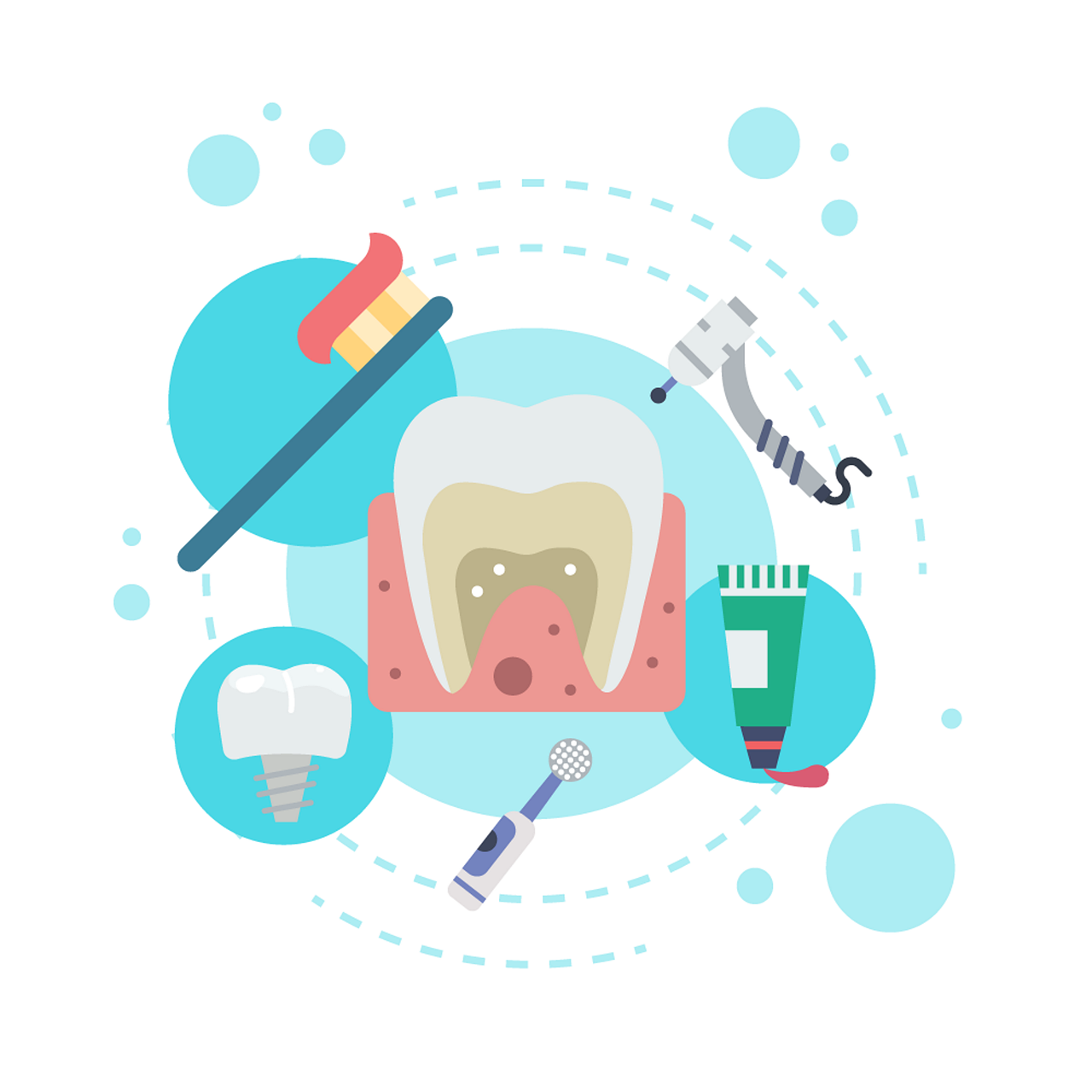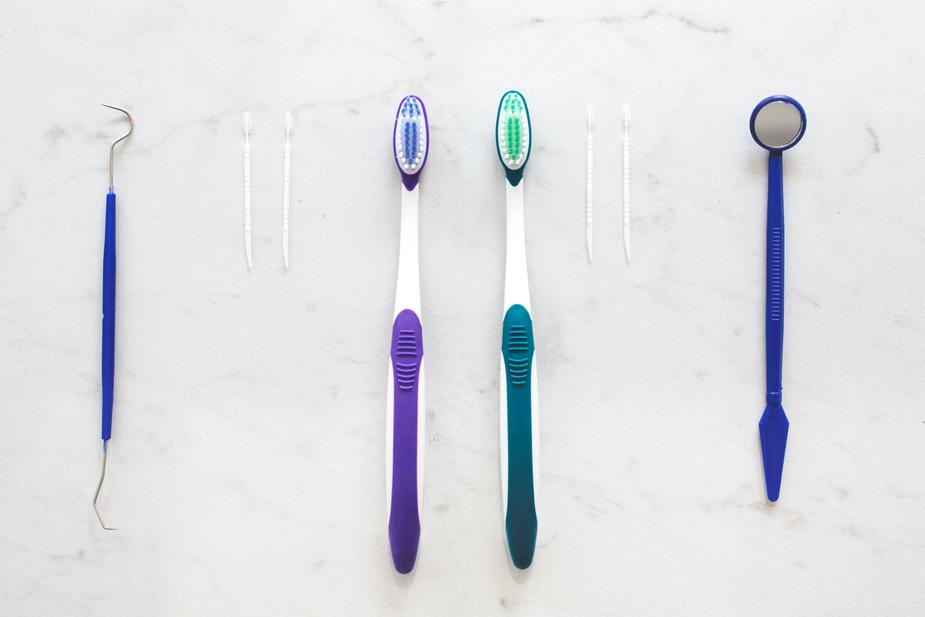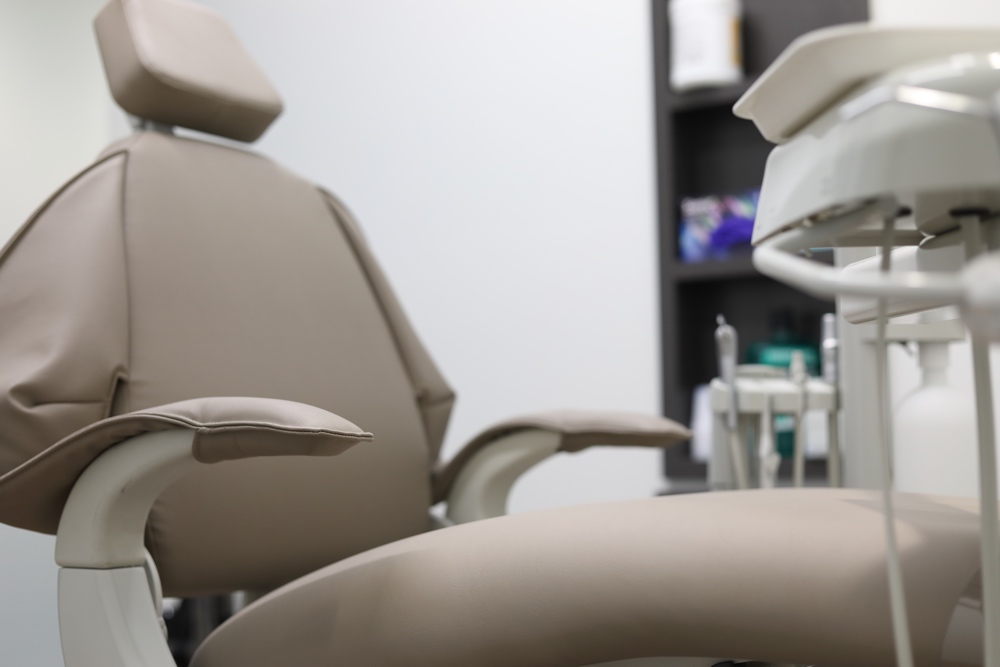Family Dentistry
Oral Hygiene Care

Maintaining good oral hygiene is one of the most important things you can do for your teeth and gums. Healthy teeth not only enable you to look and feel good, they make it possible to eat and speak properly. Good oral health is important to your overall well-being. Daily preventive care, including proper brushing and flossing, will help stop problems before they develop.
In between regular visits to the dentist, there are simple steps that each of us can take to greatly decrease the risk of developing tooth decay, gum disease and other dental problems. These include:
- Brush thoroughly twice a day and floss daily
- Eat a balanced diet and limit snacks between meals
- Use dental products which contain fluoride, including toothpaste
- Rinse with a flouride mouth rinse if advised to do so
- Make sure children under 12 drink fluoridated water, or take a fluoride supplement if they live in a non-fluoridated area
- Visit your dentist regularly for professional cleanings and oral exams
- Replace your toothbrush every 3-4 months
- Your teeth are clean and free of debris
- Gums are pink and do not hurt or bleed when you brush or floss
- Bad breath is not a constant problem
Dental Cleaning

A dental cleaning is a professional cleaning you receive from a dentist or dental hygienist. Most dental cleanings take approximately 45 minutes. Cleanings should be performed every six months to prevent excessive plaque buildup. Plaque left untreated can lead to unhealthy gums and tooth decay. During your routine cleaning we will remove excess plaque and polish your teeth.
Periodontal Disease

Periodontal disease is an infection of the tissues that support your teeth. 75 percent of Americans over the age of 35 have some form of periodontal disease, but the majority does not realize it.
If you have periodontal disease, you may be experiencing persistent bad breath, bleeding of the gums when brushing or flossing, soft, swollen, or tender gums, gums pulling away from the teeth or loose teeth. You may also notice inflammation of the gums between the teeth. This is where periodontal disease usually starts.
The main cause of periodontal disease is the accumulation of plaque, the sticky film of food and bacteria that forms constantly on your teeth. If the plaque is not removed everyday, the bacteria in plaque invade the spaces between the teeth and gums and begin producing toxins. These toxins, combined with your body’s reaction to them, destroy the bone around your teeth. And once bone has been lost, it never grows back on its own. When too much bone is lost, there’s so little support for the teeth, they get loose and have to be removed.
Early detection is the key to successful treatment. Dr. Bahl routinely performs a gum-disease-screening exam. The results of this exam will determine your periodontal status. If you have periodontal disease your treatment will be personalized for you and your level of infection.
With on-going monitoring and treatment, a recurrence of periodontal disease can be avoided. Daily care and professional maintenance visits are a commitment to better health.
Pediatric Dentistry

We love to see our “little patients” and teach them all about taking care of their teeth. We focus on ensuring a positive experience for them. We provide regular exams, cleanings, sealants and fillings and other pediatric procedures.
Fillings

A filling is a way to restore a tooth damaged by decay back to its normal function and shape. If you have a tooth that requires a filling, the dentist will first remove the decayed tooth material, clean the affected area, and then fill the cleaned out cavity with a filling material. A filling helps prevent further decay by closing off any cracks or spaces where bacteria can enter.
There are a variety of filling materials available including gold, silver, plastic and porcelain. The dentist will work with you to determine which material is best, depending on the extent of repair, where in the filling is needed, and cost.
If decay or a fracture has damaged a large portion of the tooth, a crown (or ‘cap’) may be recommended. Decay that has reached the nerve may be treated through root canal therapy or through a procedure called pulp capping.
Sealants

Sealants are used to fill narrow grooves in a tooth that cannot be adequately cleaned by brushing. In some cases, the tooth structure has fine grooves or pits which accumulate plaque, not because the person doesn’t brush, but because they’re too narrow to allow even one bristle into them. To avoid cavities developing over time, the dentist will brush on a coating that seals the grooves and pits, making it possible to brush off all the plaque and keep your teeth healthy.
Tooth Extractions

Good oral hygiene should always be practiced since the loss of a single tooth can have major impact upon your oral health and appearance. Although dentists will use every measure to prevent tooth loss, there are still sometimes necessary occasions when a tooth may need to be extracted. A tooth may need to be extracted for the following reasons:
- Severe decay
- Advanced periodontal disease
- Infection or abcess
- Orthodontic correction
- Malpositioned teeth
- Fractured teeth or roots
- Impacted teeth
After careful examination and treatment, the dentist may advise to have a tooth extracted. Before a tooth is removed, the dentist will take an x-ray in order to understand the shape and position of the tooth and surrounding bone. Based on the degree of difficulty, we may refer you to a specialized oral surgeon.
For a simple extraction, we will first apply a local anesthetic to prevent pain and discomfort. The tooth will be loosened with a tool called an elevator and then removed with dental forceps. Once the procedure is complete, the area may be closed with one or two stitches. We will then provide you with care instructions to alleviate discomfort and ensure proper healing.
Wisdom Tooth Extractions

Wisdom teeth are the last molars or “third molars” that develop on each side of the jaws. Wisdom teeth usually emerge in the back of the mouth between the ages of 16-20.
Wisdom teeth are a valuable asset to the mouth when they are healthy and properly positioned. Often, however, problems develop that require their removal. When the jaw isn’t large enough to accommodate wisdom teeth, they can become impacted (unable to come in or misaligned). Wisdom teeth may also grow in sideways, emerge only part way through the gum or remain trapped beneath the gum and bone.
A wisdom tooth extraction is a relatively routine procedure. The dentist will numb the area in your mouth with a local anesthesia or use IV sedation so you are asleep during the procedure.
After the tooth is removed, we will provide care instructions to ensure proper healing. Some pain and swelling may occur but will normally subside after a few days. You should call your dentist if you have prolonged or severe pain, swelling, bleeding or fever.
Root Canal Treatment

Root canal treatment (also referred to as root canal therapy or endodontic therapy) is made necessary when an untreated cavity reaches all the way to the pulp. Treatment may also be needed when deep restorations or trauma to a tooth cause nerve damage. Once the pulp becomes infected,it can begin to eat away at the surrounding bone (this is known as an abscess).
If the pulp is infected, not only is it painful but it will require treatment as it cannot heal on its own. Symptoms that indicate the pulp has become infected may include sensitivity to hot/cold or sweets, pain, swelling, pain to biting or pressure, and a bad taste in the mouth. However, sometimes no symptoms are apparent and you may be unaware of any problem until a checkup. A root canal is performed to clean out the infected tooth pulp and disinfect the canals of the tooth. Alternate treatment would be to extract the tooth. Once the infection is resolved, the canal is filled in to prevent any further infection.
Usually a core build-up and crown is recommended for restoring a tooth that has undergone root canal therapy.